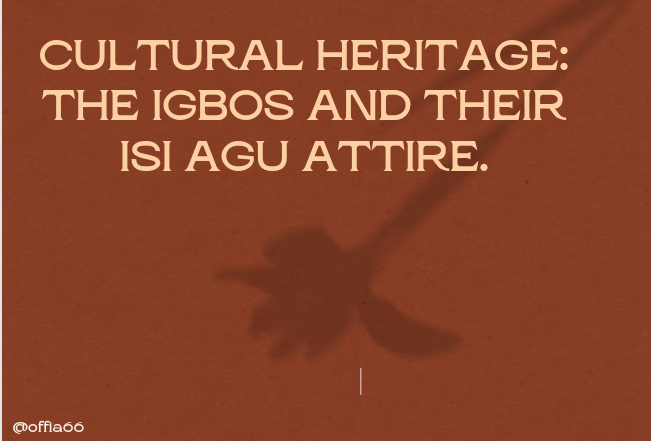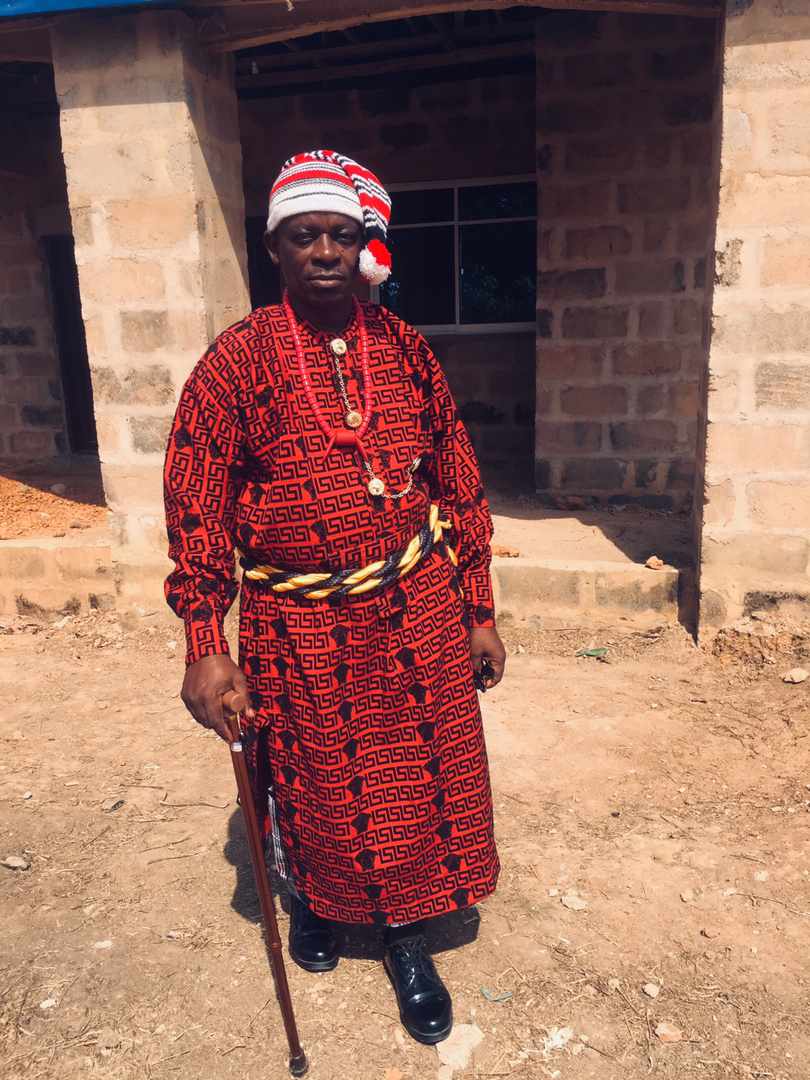Hello, everyone.
Cultural heritage is something a particular set of people are known for and are identified by; it can be traditional clothing, buildings, or even food. Once these cultural symbols are sighted, a conclusion can be drawn that one is from a particular region or place. In Nigeria, we have three major ethnic groups, which include the Igbos, the Hausas, and the Yorubas. The Igbos predominantly occupy the eastern part of the country; the Yorubas occupy the west; and the Hausas occupy the northern part of the country. Each of these ethnic groups has attire, language, and tradition they are known for and are identified by these attires and traditions.

designed in canva.
Once you see attire unique to the Yorubas, you will know even without being told. It doesn't matter if the person wearing the attire hails from that region; it is concluded that they are from the region unless they speak up, stating the reason it was worn for, maybe for the sake of fashion or admiration of the Yorubas. This is what cultural heritage can do: it helps us stand out; it is our identity. People get to know our origin without asking; it has been preserved for ages, though a lot of our traditions have faded with time, but some will be preserved forever so generations to come can witness it too.
In this post, I will be talking about the attire unique to the Igbos. They predominantly occupy the eastern part of the country and are famous for how good they are in business, more like they were made for it. Talking about the Igbo attire, not because I am Igbo but because I am more familiar with it, the Igbos are known for the Isi Agu Attire (lion head). material designed with the head of a roaring lion all over it. We all know what a lion stands for: strength, power, and authority, and it is the same thing when it comes to this attire. The attire is accompanied by a red cap and a walking stick for elders, but if it is worn for fashion, then the walking stick and red cap are not really necessary.
The isi agu attire is worn only on special occasions; maybe a festival or a new king is taking over power; all elders are expected to appear in the attire; or in some cases, if one's child is getting married, the father and groom can use the attire to grace the occasion. The isi agu is not a casual wear; it shows the strength of the Igbo people. Those days, it was as if the Igbo people worshipped this attire; if you wore it wrongly, you get cautioned. The attire is something the Igbos are known for and will be known for; it passes from generation to generation.

A picture of my dad in the attire.
It can also be used to show respect, and you will know if you are welcomed by the people and their leaders or not. If a highly respected individual visits the land, in order to show they are welcome, they are given this attire to put on while addressing the people.
Back in the day, these attires were only worn by elders of the land, those in power, and some people got the grace to wear them on special occasions, but lately, fabric-producing companies have flooded the market with imitations, giving almost everyone access to the attire, but you can still tell the difference between the one elders wear and the ones flooding the local markets.
This is my entry for day 3 of the [InLeo] (https://inleo.io/@leo.tasks/april-inleo-monthly-calendar-now-here) monthly prompt. You can join by clicking the above link.
Thanks for reading my post.
Posted Using InLeo Alpha